If You Can Do These 5 Moves, Your Body Is Years Younger
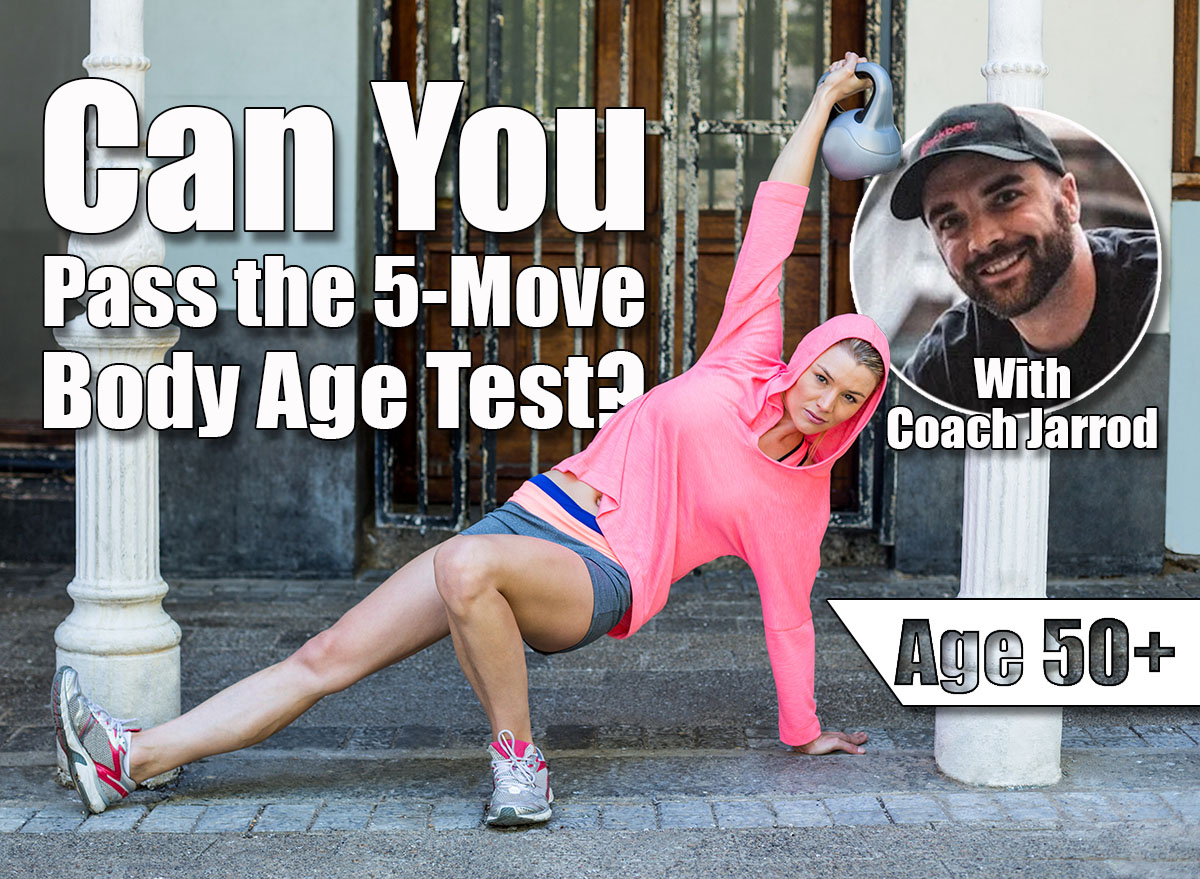
Getting older is inevitable. Moving like you are old is not. One of the best ways to determine how well you are aging is to test how well you can move. Moving well indicates that your body is strong, mobile, and resilient, and that your muscles, joints, and nervous system are functioning together effectively. If you can perform the following five exercises with control, power, and confidence, you are demonstrating physical traits that many people lose with age.
These movements measure how coordinated your body is, how mobile your joints are, how much control you have on one leg, and how much power you can produce. Together, they give a clear picture of how well you are moving. They also train the physical qualities that help you feel and perform younger.
If you can’t do all of these movements today, take it as feedback, not failure. You can rebuild your strength, control, and mobility with consistent practice. Also, don’t hesitate to modify each one to fit your current ability and progress over time (we all start somewhere!).
The following five moves are your real-time fitness check. They are also the foundation of a body that feels more capable and youthful. Master them, and you will not only feel years younger, you will perform that way too.
5 Moves That Reveal Your Body’s True Age
Move #1: Lunge with Rotation
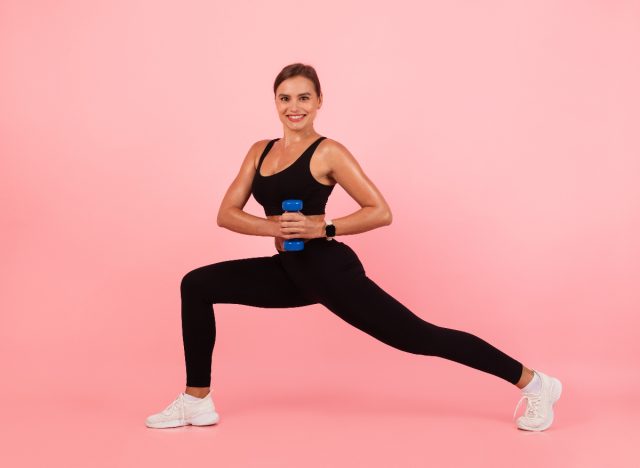
This movement tests your lower-body strength, balance, coordination, and spinal mobility simultaneously. It challenges your hips, core, and legs while forcing your body to rotate and stabilize, which is something many people tend to stop doing as they age. It mimics real-life movement patterns that involve stepping, turning, and reaching, helping your body move more dynamically in everyday life.
Muscles Trained: Glutes, quads, hamstrings, obliques, core, hip flexors
How to Do It:
- Stand tall with your feet hip-width apart and arms at your sides.
- Step forward into a lunge with your right foot.
- Lower your back knee toward the ground while keeping your front heel planted.
- Rotate your torso toward your front leg as you reach both arms across your body.
- Return your arms to center.
- Push through your front heel to return to a standing position.
- Repeat on the other side.
How to Pass the Test: You should be able to lunge without losing balance or tipping forward. Your arms should rotate smoothly, and your knee should not cave inward.
Form Tip: Keep your front knee in line with your second toe and rotate from your torso, not your arms.
Move #2: Broad Jump
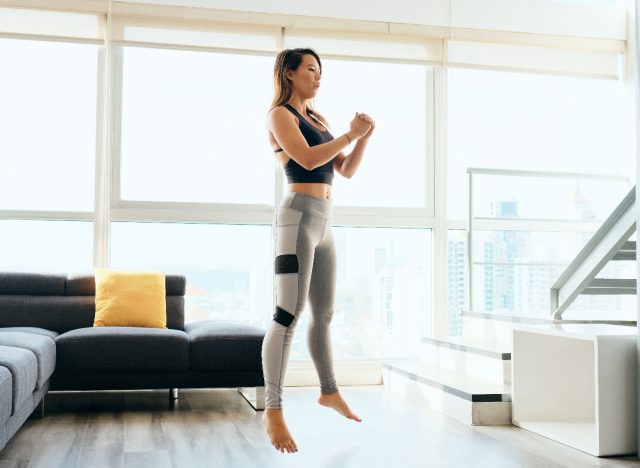
Broad jumps reveal how much power your body can produce, which is one of the first qualities to fade with age. If you can still explode forward and land with control, your muscles are working in sync. It also trains your fast-twitch fibers, which play a significant role in athleticism and help prevent injuries from falls.
Muscles Trained: Glutes, quads, calves, hamstrings, core
How to Do It:
- Stand with your feet shoulder-width apart.
- Bend your knees and swing your arms back to load your hips.
- Explode forward as far as possible, swinging your arms to drive your jump.
- Land softly with both feet flat and knees slightly bent.
- Reset your stance before repeating.
How to Pass the Test: You should be able to jump at least your height in distance and land without losing balance.
Form Tip: Land with your knees bent and hips back to absorb the impact.
Move #3: Single-Leg Romanian Deadlift
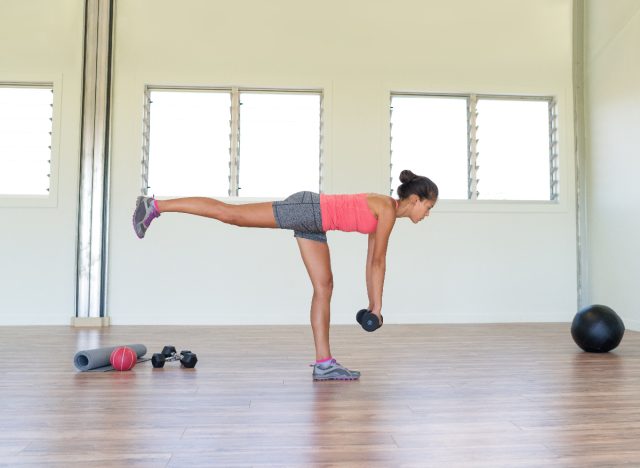
This is one of the best tests of balance, hip control, and posterior chain strength. It indicates whether your hips and hamstrings are functioning properly without compensation. Single-leg control often declines with age, so this movement helps preserve it while building strength and coordination.
Muscles Trained: Glutes, hamstrings, calves, core
How to Do It:
- Stand tall with your feet together.
- Shift your weight onto your right foot.
- Hinge forward at your hips as you extend your left leg straight behind you.
- Lower your torso until it is almost parallel with the ground.
- Keep your back flat and arms reaching forward or holding light weights.
- Return to standing by driving through your heel.
- Repeat on the other leg.
How to Pass the Test: You should be able to hinge forward without wobbling or rotating your torso. Your back leg and spine should form a straight line.
Form Tip: Focus your eyes on one spot in front of you and keep your hips square.
Move #4: Turkish Get-Up
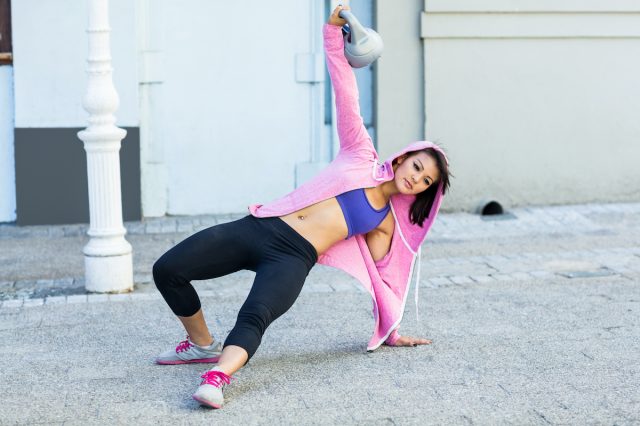
The Turkish get-up is a doozy of a challenge. It requires every joint and muscle in your body while demanding coordination, shoulder stability, hip mobility, and core strength. If you can move from the floor to standing while holding weight overhead, your body is moving with total control and strength.
Muscles Trained: Shoulders, triceps, core, glutes, quads, hamstrings, lats
How to Do It:
- Lie on your back
- Straighten your right arm, holding a weight above your chest and shoulder.
- Bend your right knee, keeping your foot flat on the ground.
- Push through your foot and prop yourself up onto your left elbow.
- Extend your left arm and lift your hips off the ground.
- Sweep your left leg underneath into a kneeling position.
- Press into your front foot and stand up.
- Reverse each step to return to the ground.
- Switch sides.
How to Pass the Test: You should be able to complete the movement without dropping your eyes from the weight or losing control.
Form Tip: Move slowly and focus on keeping the weight stacked over your shoulder.
Move #5: Lateral Shuffle for 20 Yards
This is a key movement for agility and quickness. It trains your ability to move side to side, which is essential for balance, fall prevention, and sports performance. The ability to change directions quickly shows fast muscle response and joint stability.
Muscles Trained: Glutes, quads, hip abductors, calves, core
How to Do It:
- Stand in an athletic stance with your knees slightly bent.
- Push off your right foot and shuffle to the left.
- Keep your chest up and feet from crossing.
- Shuffle 20 yards to one side.
- Stop and shuffle back.
How to Pass the Test: You should be able to cover 20 yards in under 10 seconds without losing form.
Form Tip: Maintain a low stance and keep your hips level throughout the movement.
The Best Tips for Improving Your Health and Fitness to Become “Younger”
The more you move, the more your body adapts. These movements are tools to maintain youth through strength, control, and power. You don’t have to be perfect today. You just have to keep showing up.
- Practice balance-based exercises a few times per week to improve coordination.
- Train both power and control to preserve the function of fast-twitch muscles.
- Add mobility work into your warm-ups and cool-downs.
- Walk, jump, rotate, and carry weights often.
- Focus on building single-leg strength exercises (such as lunges and step-ups) to enhance joint health and stability.
- Engage in physical activity every day, even for just five minutes.
- Use exercise as a way to build confidence and independence through movement.